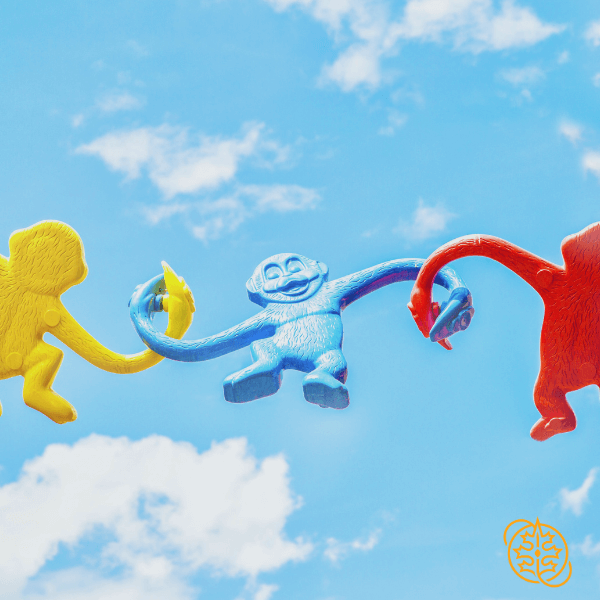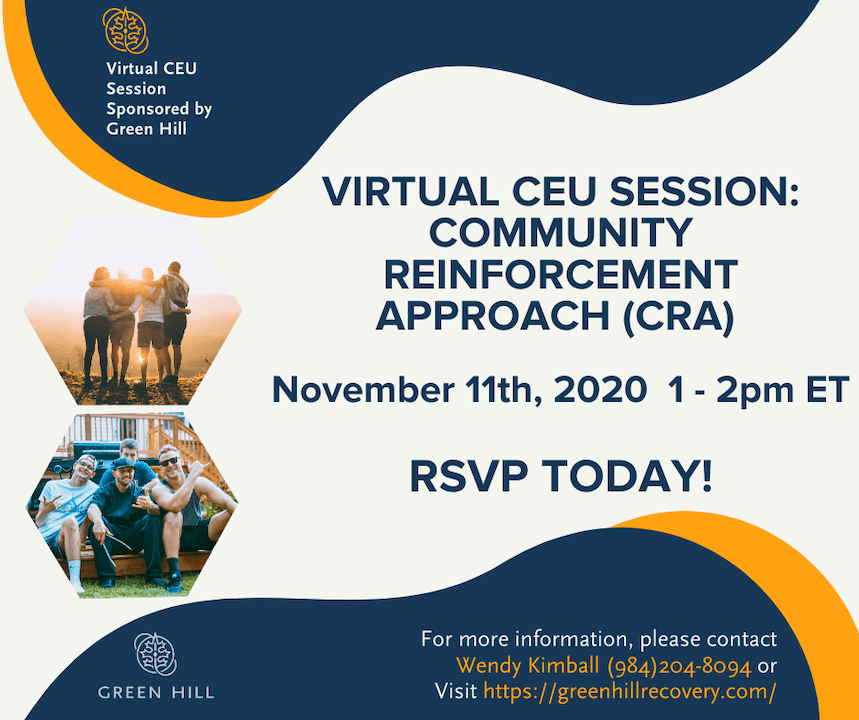
By Marcus Shumate, LCMHC, LCAS, Clinical Outreach Director, Green Hill
Community-Reinforcement Approach (CRA) is one of the more interesting clinical models for treating substance use disorders. It may lack the notoriety of other models, but it makes up for its lack of notoriety in its effectiveness. In the research arena, CRA has a strong evidence base to support its utilization (Resources: 1, 2).
What is the Community-Reinforcement Approach exactly? And, if it has such good outcomes, one could ask, why haven’t I heard of it? Hopefully this blog post can clear up some of those questions and introduce the approach to you.
What is the Community-Reinforcement Approach (CRA)?
Source: Recovery Answers – Community Reinforcement Approach
The Community Reinforcement Approach (CRA) is a psychosocial intervention for individuals with alcohol and other drug use disorders that focuses on helping individuals find healthier, more adaptive ways to meet their social and emotional needs than using substances.
At the risk of removing some of the more interesting nuance about CRA, I’ll try to go beyond just a brief overview of what it is and how it works. That said, CRA is absolutely worth additional time and exploration so feel free to reach out to me or check out online resources to learn more about CRA (Such as 1, 2). Frankly, I believe more people in the substance use disorder treatment field should know about it and utilize it.
Community-Reinforcement Approach relies heavily on assumptions found in behaviorism. Behaviorism is essentially the theory that human behavior is shaped by the environment through a process referred to as conditioning. CRA runs on the notion that a client can obtain sobriety through creating an incentive-rich environment that reinforces sobriety. It relies heavily on a tool called the Happiness Scale, which helps a client rate his/her level of satisfaction in various life areas (education, vocation, relationships, recreation, spirituality, etc.) during their initial sessions. From there a treatment plan is formed in which the client and therapist agree to focus on improving the level of satisfaction in agreed upon areas.
How is Community-Reinforcement Approach (CRA) Different?
Unlike other modalities for addressing substance use disorder, CRA prioritizes improving quality of life independent of a person’s ongoing substance use. The great benefit in this difference is that, at some point, a natural tension is created where a client’s desire to keep using substances begins to interfere with his/her agreed upon life goals. In this way, an organic desire for change can begin to emerge while the client has been improving his/her life.
Here is an example – imagine a scenario where a client rates their “overall satisfaction” with their education progress as “low”, and then working with them to identify the necessary skills that would allow them to elevate their satisfaction. However, their satisfaction here will likely meet an artificial ceiling if they can’t stop drinking excessively which leads to failing to complete assignments, or showing up to class hungover. Eventually, something has to change if they’d like to do better. On the other side of this process, they will have all the more reason to keep working on their sobriety because they are doing well in school and wouldn’t want to jeopardize that.
The Community-Reinforcement Approach (CRA) Reward System
On a personal note, one of the reasons I love CRA is that I am skeptical about the amount of free will a person actually has. If you’ll indulge the notion that free will may be rather limited, I’ll build my case on why CRA does a good job of accounting for this. As humans we’re heavily driven by activities that we find rewarding and don’t have control over what we do find rewarding.
In the case of addiction, that experience of “reward” can drive a person to ongoing and problematic use because of how intense the reward sensation can be. Over time, this can lead to a narrowing of priorities where a person’s brain is almost exclusively focused on obtaining that reward sensation through substances.
CRA creates a system by which a client can focus on building other pathways for obtaining those reward sensations. Once an environment has been created that provides other rewarding experiences, substances start to lose some of their inherent appeal.
Final Thoughts
Ultimately, CRA is focused on building a life that is more rewarding and meaningful than substance use. This meaningful and rewarding life then in turn helps pull someone towards a more sober life.
This emphasis on building a meaningful life is ultimately why this clinical model fits so perfectly with Green Hill’s approach to treatment and recovery. We remain focused on what we’re most passionate about: the work of helping our clients find purpose and flourish.





